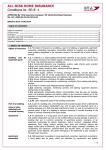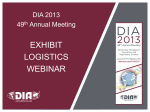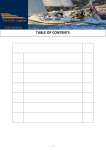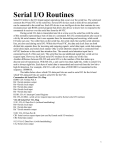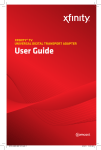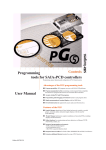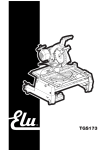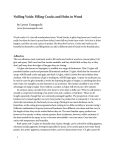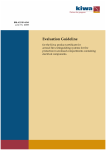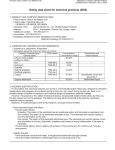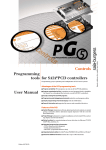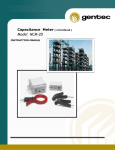Download ALL RISK COMMERCIAL PROPERTY TERMS
Transcript
ALL RISK COMMERCIAL PROPERTY TERMS AND CONDITIONS No. EE1B-1 APPROVED by “BTA Insurance Company” SE Board Decision No. LV1_0002/02-03-03-2015-23 of 17.02.2015. Effective from: 18.02.2015. (UNOFFICIAL TRANSLATION FROM ESTONIAN) TABLE OF CONTENTS Object of insurance ...................................................................................................................................... 1 Insured event .............................................................................................................................................. 3 Exclusions ................................................................................................................................................... 4 Insurable value and sum insured ..................................................................................................................... 5 Safety requirements ...................................................................................................................................... 6 Insurance indemnity ...................................................................................................................................... 7 1. OBJECT OF INSURANCE Object of insurance 1.1. The object of insurance in the insurance contract is: 1.1.1. building, 1.1.2. a part of a building; 1.1.3. improvement construction; 1.1.4. inventory and equipment; 1.1.5. goods (e.g. materials, raw materials, semi-finished production, finished products and packaging materials); 1.1.6. co-owned parts of the building; 1.1.7. other property indicated in the insurance contract. Building and its important parts 1.2. A building is a legal building permanently attached to the ground, which has a roof, exterior enclosure and interior spaces, including its important parts that are used for living. The important parts of a building are: 1.2.1. Construction elements (e.g. foundation, exterior walls, interior walls, inserted ceilings, roof constructions and covers of a building); 1.2.2. doors, gates, elevators, stairs, windows and their glasses; 1.2.3. inner and outer decoration; 1.2.4. water supply, systems of heating, drainage, electricity, security alarm and communications with all of the construction’s permanently attached elements; 1.2.5. fire safety installations; 1.2.6. permanently incorporated air conditioning, ventilation and lighting devices; 1.2.7. built-in furniture; 1.2.8. antennae, marquees, monitoring cameras and lighting equipment attached permanently to the building; 1.2.9. permanently incorporated exterior communication lines like gas, oil, heating, water and drainage pipelines and electric cables on the insurance location up to the boundary of immovable property, but no further than the accession points of the object of insurance; 1.2.10. other inseparable parts of the building construction. 1.3. Buildings insurance can cover advertising installations only if a separate notation is made in the insurance contract. Improvement construction 1.4. The improvement construction is permanently connected to the ground which is not a building (board fence, awning, advertise with installation, outdoor lighting, flag mast) and is located in the same property with building or it part, if the insurance contract provides otherwise. Interior decoration 1.5. Interior decoration is the part of building indoor, which removal does not affect the stability or appearance of the building and the adjacent indoor parts of the building. Interior decoration is non-bearing septum, floor, suspended ceiling, wall and flooring material, built-in furniture, indoor decoration material, indoor doors and windows, sanitary ware, system parts of electricity, gas, heating, water supply, drainage, ventilation, air conditioning, fire extinction, communication and security alarm, which depends only on the holder of the insured indoor. 1 In the case of contradictions between the Estonian and English version, the Estonian version shall prevail. 1|7 Interior decoration is considered as part of the building. Inventory and equipment 1.6. Inventory and equipment are insured movable property located at the place of insurance other than goods, structure or parts thereof, and the items listed in Section 1.11. (terms and conditions). 1.6.1. The following items are regarded as inventory and equipment, among others: a) equipment and machinery used in the course of business, their accessories and spare parts for own use; b) office equipment (including computers, servers, photocopiers, phone systems, etc.); c) office furniture, supplies and tools; d) promotional materials and product samples. 1.6.2. Inventory and equipment can be insured on the basis of a list of insured items or without such a list. Goods 1.7. Goods are insured articles located at the place of insurance (including materials, raw materials, semi-finished products, finished products and packaging materials) which the policyholder intends to sell. 1.8. Goods can also be movable property in possession of the policyholder under the law of obligation (including a contract agreement, pledge, deposit, or sales agreement). E.g. articles currently being repaired, maintained or stored upon a relevant agreement. 1.9. The items mentioned in the section 1.8. are insured only if this is agreed in the insurance contract. Investments during the period of insurance 1.10. Investments are: 1.10.1. improvements to the building and its interior finishing: a) improvements to the building and its interior finishing are parts of the building that are added during the insurance period (e.g. added built-in furniture); b) the insurance cover extends to improvements if they are covered in the building or interior finishing insurance under these terms and conditions; c) the amount of insurance cover for improvements to the building and interior finishing is 10% of the amount of buildings insurance, up to 20 000 EUR; d) the insurance covers the improvements to the building and interior finishing to the extent of the insurance cover set out in section 1.10.1.c), even if the policyholder has not informed the insurer about the improvements; e) upon agreement with the insurer, improvements to a building and its interior finishing can also be insured for larger amount of insurance cover than previously mentioned, in which case it should be noted separately in the insurance contract. 1.10.2. Investments in inventory and equipment: a) additional acquisition or replacement with (an)other similar item(s) mentioned in Section 1.10.2. during the period of insurance and improvements to these items are automatically insured if the purchased item or the part added to an insured object has been insured under these insurance terms and conditions; b) the amount of insurance cover for items purchased and improvements made during the period of insurance is 10% of the amount of insurance cover for the same group of inventory and equipment located at the same place of insurance, but not more than a total of 20 000 EUR for the inventory and equipment at the same place of insurance; c) the insurance covers investments in the inventory and equipment to the extent of the insurance cover set out in section 1.10.2.b), even if the policyholder has not informed the insurer about these investments; d) inventory and equipment, or improvements to the above, purchased during the period of insurance can also be insured for a larger amount; in such a case this should be noted separately in the insurance contract. Co-owned parts of buildings 1.11. Co-owned parts of buildings are the parts that belong to all owners jointly. Coowned parts of buildings include, for example: 1.11.1. the building envelope (exterior walls, roof, balconies, external windows, etc.); 1.11.2. bearing structures of the building (foundations, load-bearing interior walls, ceilings, etc.); 1.11.3. parts of the building in shared use (corridors, stairwells, basements, lofts, lifts, rubbish bins, chimneys, etc.); 1 In the case of contradictions between the Estonian and English version, the Estonian version shall prevail. 2|7 1.11.4. shared heating systems inside buildings; 1.11.5. water and sewerage systems inside buildings up to the connection with the actual part which is delimited by a wall, floor or ceiling; 1.11.6. central gas supply pipework inside buildings; 1.11.7. electrical systems inside buildings up to switch off appliances of the actual part; 1.11.8. shared ventilation, air-conditioning, fire-fighting and communication systems inside buildings. 1.12. The following cannot be considered as objects of insurance when insuring co-owned parts of buildings: 1.12.1. the actual parts of the apartments (including non-bearing partitions, floors, interior finishing, interior doors, interior windows, built-in furniture, heaters, plumbing fixtures, etc. that are not included in a shared heating system); 1.12.2. insurance of co-owned apartments are not included in the insured items mentioned in section 1.13. Object of insurance is not 1.13. Unless agreed upon differently, an object of insurance is not: 1.13.1. buildings and constructions that are not meant for long-term use (portable mobile homes, tents, inflatable constructions, temporary constructions, etc.) and the movable property that these include; 1.13.2. water constructions (e.g. ponds, fountains, pools, containers) that remain outside of the insured property; 1.13.3. pumps in water bodies and wells; 1.13.4. water or other liquids in the pipelines or pools of the object of insurance; 1.13.5. sculptures, sports grounds; 1.13.6. greenhouses; 1.13.7. bridges, berths, constructions under or on top of water; 1.13.8. building or parts of a building, the construction of which has not been in accordance with the claims provided by law: a) living organisms like plants, animals; birds, fishes; b) items in illegal possession, including items which require a permit or licence, stolen items, etc.; c) land vehicles, watercraft and aircraft with accessories; d) building materials; e) weapons, ammunition, explosives; f) computer software, licences, electronic data, databases; g) cash, securities, debt securities, documents, scripts, drawings, sketches, paintings, plans, card indices, payment cards and other means of payment; h) jewels, precious metals and objects of precious metal, gemstones and semiprecious gemstones; i) unique objects, prototypes and collections; 1.13.9. according to the given conditions, a collection is a systematic collection of objects of the same type (e.g. postage stamps, postcards, calendars, labels, coins), which has a scientific, cultural-historical or art value. Area of insurance 1.14. An area of insurance includes a building, part of a building or improvement construction that is located on the address provided in the insurance contract. An insurance contract is valid only for an insured event that has occurred at the place of insurance. 1.15. Where separately agreed upon and stated in the insurance contract, portable property will be covered by the insurance contract only if it is under supervision or kept in a locked room or closed site. 2. INSURED EVENT Insured event 2.1. An insured event is the damage, destruction or loss of an object of insurance caused by an unexpected and unforeseen event, except in cases described under the given conditions in “Exclusions“ and under the general conditions of BTA insurance contracts in “General exclusions″. Supplementary insurance coverage 2.2. When signing the contract of insurance, the BTA and policyholder may agree upon supplementary insurance coverage: 2.2.1. Electricity risks The insurer will compensate for the damage caused to insured property, if it is caused by: a) power interruption due to an accident or without being notified of in advance; Electricity risks 1 In the case of contradictions between the Estonian and English version, the Estonian version shall prevail. 3|7 Flood Equipment failure Other kinds of insurance cover 3. b) the effect of electric current, incl. damage caused by excess voltage or short circuit; c) indirect effect of lightning and electrical or magnetic phenomena that follow. Damage caused by regular or informed power interruptions is not regarded as an insured event; 2.2.2. flooding is an unusual but natural increase in the water level (including flooding by storm, rainfall or other natural phenomenon) that causes an unusually large amount of water that cannot be taken away by the soil or drainage systems; 2.2.3. movement of water below ground level or water penetration into the building only through underground structures or underground utility systems (e.g., if the groundwater enters the basement of a building) are not considered as flooding; 2.2.4. an insured event of equipment failure means sudden and unexpected destruction or damage to the insured equipment, caused by internal breakage or another internal failure; 2.2.5. the insurance for internal breakage does not cover the expenses repairing or replacing the part that caused the damage; 2.2.6. here are some examples of incidents that would be considered as insured events: a) too much or too little pressure; b) centrifugal force; c) short-circuit, power surge and other electrical causes not caused by external factors; d) damage to a device resulting from its internal parts coming loose; e) loss caused by material and design-related faults that damage the rest of a high-quality component of the device; f) smouldering and smoke without open flames; g) frost damage; 2.2.7. Equipment failure exclusions: a) loss or damage caused by external circumstances (including external power surge, lack of power, power fluctuation or short circuit) are not considered as an insured event unless agreed otherwise in the insurance contract; b) the insurer will not pay for the cost of the damage caused by the fault; c) in addition to the exclusions set out in Sections 2.2.7.a) and 2.2.7.b)., the exclusions described in the ‘Exclusions’ chapter of Section 3 of these terms and conditions and in the ‘General Exclusions’ chapter of the General Terms of BTA Insurance Contracts, apply. 2.3. It is also possible to insure against other risks which are not provided for or are excluded by these terms and conditions. EXCLUSIONS There is no compensation for 3.1. It is not regarded as an insured event and there is no compensation for loss, when the damage has been caused directly or indirectly under the following circumstances: Long-term processes 3.1.1. continuous long-term processes (e.g. corrosion, wear and tear, oxidation, lime scale, rotting, moulding, fungus damage, natural effect of humidity or light, change in colour, smell, dust, waste, soot, changes in air temperature or humidity level, drying, vaporisation, changes in material or exterior decoration); Sinking and cracking Wrong use Construction related 1 As an exception, damage is compensated for that has not been caused directly by the circumstances mentioned above (e.g. when a depreciated pipe falls apart and water damages the interior decoration of an insured property, the restoration costs of interior decoration receive compensation, but the repair costs of water pipes are not compensated for). 3.1.2. sinking, shifting and cracking of the foundation, when the mentioned processes are not caused by an insured event; 3.1.3. freezing of ground; 3.1.4. effect of chemicals; 3.1.5. weight of ice and snow; 3.1.6. damage caused by pests, rodents or other animals; 3.1.7. violation of the user manual and conditions of the object of insurance or using the object of insurance for unintended purposes or ways; 3.1.8. performing renovation, reconstruction or construction works in the area of insurance, while ignoring the valid legislation; In the case of contradictions between the Estonian and English version, the Estonian version shall prevail. 4|7 Interruptions Power interruptions Asbestos Flooding Earthquake 3.1.9. low quality renovation, maintenance, designing work or using low quality or unsuitable material; 3.1.10. interruptions of water, gas, electricity or any other energy supply, when such interruption is not caused by an insured event; 3.1.11. damaging or loss of computer files and software; 3.1.12. damage to electrical devices (e.g. heating boiler, hot water boiler, pump), which are caused by power interruptions (e.g. an accident or power outage), short circuit or the indirect effect of lightning, if not agreed upon and mentioned otherwise in the policy; 3.1.13. changes in the level of groundwater and overflow of the drainage system and rainwater pipes; 3.1.14. effect of asbestos and its ingredients; 3.1.15. flooding caused, for example, by rain, melting snow, storm, rising groundwater, surface water, and rising sea levels or soil water. This exclusion shall not apply where the insurance contract provides for insurance against flooding separately; 3.1.16. erosion of soil, collapse, earth fall, earthquake or a tsunami; 3.1.17. invasion of precipitation or melting water of ice or snow through the roof, constructions of the roof cover, windows, doors, joints, the foundation or other constructions; 3.1.18. accumulation of condensation; Loss of insured property (excl. burglary and robbery) Liabilities of third party persons 3.1.19. other reasons related to the loss of insured property, excluding burglary and robbery. According to the given conditions, it is regarded as burglary when an insured building has been broken into by damaging its constructions or locks and when clear signs of burglary have been detected; and theft of property by using violence or threatening violence; is regarded as robbery; 3.1.20. damage that must be compensated by the third party according to legislation or the contract (e.g. manufacturer, supplier, dealer, curator, etc.) Costs of regular maintenance or repairs 3.1.21. costs of regular maintenance or repairs, incl. the replacement of worn out parts; Unidentified assets 3.1.22. the value of unidentified assets, the existence of which, after the occurrence of the insured event, cannot be proven by their acquisition documents, site survey or remains; Taxes and fees 3.1.23. the cost of taxes and fees that must be refunded to the person entitled to insurance indemnity or which the person entitled to receive the insurance indemnity has the right to offset (e.g. VAT); Occurrence of subsequent damage 3.1.24. damage that has occurred after the previous loss event and that the policyholder, the insured, or the legal possessor of the property, did not take relevant reasonable and adequate measures to prevent after becoming aware of the first loss event; Items of rapid depreciation 3.1.25. damage which has occurred only to parts of machinery and equipment, etc., that have a short service life and a high wear rate and therefore require frequent and regular replacement (among others): a) light bulbs, drill bits, dyes, moulds, cutting and sawblades, stencils, cylinders, crushers, hammers, grinding wheels; b) conveyor belts, sieves, hoses, elements made from rubber, textiles and plastic; brushes, cables, tyres, ropes, chains and straps; glass, porcelain and ceramic elements (if an addendum is not applied); c) fuels and oils, filters, coolants, cleaners, grease, catalysts, chemicals; 3.1.26. a fact that was known to the policyholder before the insurance contract was concluded. 4. INSURABLE VALUE AND SUM INSURED Insurable value 1 4.1. Insurable value is the value of insurable interest during the insured event. The policyholder is obliged to notify the insurer of the correct insurable value. If it appears during the insured event that the insurable value differs from the value of the object of insurance, the principles of under-insurance and over-insurance will be used to calculate the insurance indemnities. In the case of contradictions between the Estonian and English version, the Estonian version shall prevail. 5|7 Insurable value of a building 4.2. The insurable value of a building is its reinstatement value or the minimum expenditure necessary to reinstate or restore the building in its original state. The reinstatement value of a building is defined as the necessary and reasonable cost required to reinstate or restore an equivalent new building in the place of insurance (with the same technical characteristics and features, and the same intended use). If the building is not restored, its insurable value is equal to the regional construction value, minus a reasonable amount for depreciation that expresses the state of the building, particularly its age and amortisation. Insurable value of inventory and equipment 4.3. The insurable value of inventory and equipment is the reinstatement value or the market value. The reinstatement value of inventory and equipment is defined as the re-acquisition value of the assets (with the same technical characteristics and features, and the same intended use) immediately before the insured event occurred. Reinstatement of goods 4.4. The reinstatement of goods is defined as the re-purchase or re-acquisition value of the goods (with the same technical characteristics and features, and the same intended use) immediately before the insured event occurred (whichever value is least shall be applied). Market value 4.5. The market value is defined as the necessary and reasonable cost required to reacquire equivalent assets (with the same technical characteristics and features, and the same intended use). The market value is used for computers more than 2 years of age (including laptops, desktops and tablet PCs) and related devices, mobile phones, portable audio, video and photography equipment and other movable property more than 5 years old, or if the insurable value of the object is defined as the market value in the insurance contract. The age is calculated based on the time the insurance contract was concluded, whereby the asset’s year of manufacture is subtracted from the current year. Indemnity limit 4.6. The indemnity limit is the insurance indemnity ceiling agreed in the insurance contract. This is the highest amount paid for one insured event where the terms and conditions of underinsurance remain valid. An indemnity limit is agreed only if a corresponding note has been made in the insurance contract. First-risk insurance 4.7. First-risk insurance is the insurance indemnity ceiling agreed for the insured object. This is the highest amount paid for one insured event where the terms and conditions of underinsurance do not apply. First-risk insurance is agreed only if a corresponding note has been made in the insurance contract. Sum insured 4.8. Sum insured is the maximum payment sum for one insured event and is not decreased by the paid insurance indemnities. 5. SAFETY REQUIREMENTS Policyholder responsibility Fire safety Avoidance of freezing Closing a building Keeping of keys and codes Fire alarm 1 5.1. The policyholder and members for whom he is responsible are obliged to possess the insured property and use it with regular care and fulfil the safety requirements provided in the legislation and the insurance contract. 5.2. The priority is to comply with fire-safety requirements imposed by laws which govern general requirements for fire safety, requirements for basic fireextinguishing equipment and the need for these, fire safety for hot work, etc.; 5.3. The policyholder must guarantee the working order of the water supply, drainage and heating system and close or empty the water supply, drainage or heating systems in non-used or non-heated buildings. In buildings where there is no heating during the heating period or the air temperature falls under 0 °C, water must be flushed out from the water supply and heating systems in order to avoid freezing; 5.4. When leaving a building, its windows, hatches and other openings must be closed so that entering would be impossible without violating or removing the locks or barriers to the entrance; 5.5. Keys and codes of locks, and also keys and codes of a security alarm may not be kept in a place and way which enables access by third party persons. The name and address indicating the location of the insured object may not be written on the keys. When a key or code has been lost, the lock or code must be replaced immediately; 5.6. If a fire alarm has been installed in the insured area, it must be activated around the clock. The fire alarm must be designed, put together, installed, regulated and maintained according to the valid fire safety rules and manufacturer’s instructions; In the case of contradictions between the Estonian and English version, the Estonian version shall prevail. 6|7 Security alarm Automatic fireextinguishing system 6. 5.7. If a security alarm has been installed in the insured area, it must be activated for the period when the insured area is left unattended. The operation area or sensitivity of the security alarm sensor may not be reduced without authorisation; 5.8. The automatic fire-extinguishing system must be in working condition, regularly maintained and tested, and designed and installed in accordance with current legislation; 5.9. Goods stored in premises at ground level or below must be stored at a height of at least 12 cm above the floor. INSURANCE INDEMNITY Compensation for damage of a building 6.1. In the case of an insured event, the insurer will compensate for the costs that are necessary for restoring the building and bringing it back into the condition that prevailed before the insured event. Supplementary compensation for costs 6.2. The insurer will provide supplementary compensation for the costs of clearing up and demolishing property damaged as a result of an insured event and for taking away the garbage. Also, the insurer will provide compensation for the costs of preventing and/or reducing further damage. The maximum amount of the costs mentioned in the given point is up to 10% of the sum insured. Deductible 6.3. Deductibles will be discounted from the insurance indemnity. In the case of employing several deductibles simultaneously, the largest deductible will be discounted from the insurance indemnity. Under-insurance 6.4. In the case of under-insurance, insurance indemnity will be paid in proportion to the relation of the sum insured and the insurable value during the insured event. Over-insurance 6.5. In the case of over-insurance where the sum insured is larger than the insurable value, damages will be compensated in an amount equal to the value of the object of insurance. Initial compensation for a building 6.6. In the case of a building, the insurer has the right to first compensate the part of insurance indemnity which considers the depreciation of the building. The rest of it will be compensated on the basis of calculations concerning restoration of the building, if the policyholder is using the insurance indemnity in the same place to restore a building of the same kind and with the same purpose within two years from the beginning of compensation. The policyholder must have proved that the initial compensation has been used for restoring the same building. Compensation in the case of coownership 6.7. If the object of insurance is in co-ownership and has not been divided into physical shares, the costs caused by damage or destruction of an insured property in coownership will be compensated in proportion to the part of co-ownership that is possessed by the insured person. Compensation of repairs 6.8. If the damaged property can be repaired and it is economically reasoned, the costs of repairs will be compensated. Financial compensation 6.9. If renovation of movable property is impossible or economically unreasonable, financial compensation will be paid. Financial compensation is paid according to the principle that objects up to the age of 2 years are compensated at the price of a new object of the same kind (including laptops, table and tablet PCs) and related devices, like mobile phones, portable audio, video and photographic equipment, and other objects. Up to 5 years of age shall be compensated of equivalent of a new object of the purchase equivalent the case of older objects; their current value or the price of a used object of the same kind is taken into account. Deposition of damaged objects to insurer 6.10. The insurer has the right to demand that the policyholder deposits the object of insurance (its parts) before paying the insurance indemnity. If the policyholder does not wish to deposit the damaged or destructed object (its parts), the insurer will compensate the difference in the value of the object of insurance before and after the insured event. 1 In the case of contradictions between the Estonian and English version, the Estonian version shall prevail. 7|7







